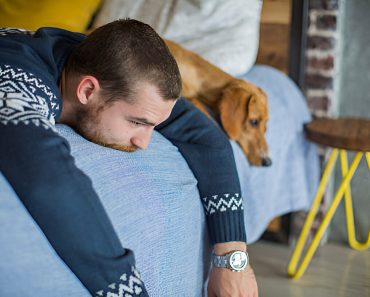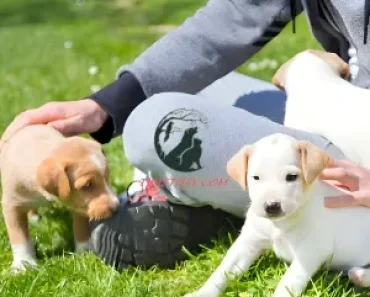
Separation
Helping a dog with separation anxiety requires patience, consistency, and a combination of training, environmental changes, and sometimes professional help. Here are steps to help your dog feel more secure and comfortable when left alone:
What is Separation Anxiety in Dogs?
Separation anxiety in dogs is a behavioral condition where a dog becomes extremely distressed and anxious when separated from their owner or left alone. It is one of the most common issues among dogs and can manifest in various ways, from mild discomfort to severe panic.
Causes of Separation Anxiety
- Change in routine: A sudden shift in daily schedules, such as a new job or school hours, can trigger anxiety.
- Abandonment or rehoming: Dogs that have been abandoned, rehomed, or spent time in shelters are more prone to developing separation anxiety.
- Trauma or loss: Events like moving to a new home, the loss of a family member, or another pet can cause stress.
- Overdependence: Dogs that are overly attached to their owners and rely on constant attention are at higher risk.
Symptoms of Separation Anxiety
- Vocalizations: Excessive barking, whining, or howling when the owner is not present.
- Destructive behavior: Chewing furniture, scratching doors or windows, and digging.
- Restlessness: Pacing or other nervous behaviors when left alone.
- House soiling: Urinating or defecating indoors, despite being potty trained.
- Attempts to escape: Trying to break out of a crate, room, or house, often injuring themselves in the process.
- Loss of appetite: Refusing to eat or drink when alone.
- Clinginess: Following the owner everywhere and showing distress when the owner prepares to leave.
How It Differs from Normal Canine Behavior
It’s natural for dogs to prefer the company of their owners and feel mildly uneasy when left alone. However, separation anxiety is characterized by intense distress and often leads to behaviors that are out of proportion to the situation, such as:
- Extreme reactions within minutes of the owner’s departure.
- Inability to settle or self-soothe when alone.
Why It Matters
Separation anxiety isn’t just stressful for the dog—it can also affect their physical health (e.g., self-inflicted injuries, weight loss) and lead to frustration for the owner. Early recognition and intervention are essential to help the dog feel more secure and prevent worsening of the condition.
How To Recognize Separation Anxiety in Your Dog

Separation
Recognizing separation anxiety in your dog involves observing their behavior when you prepare to leave, during your absence, and after you return. Dogs with separation anxiety exhibit specific signs of distress that are distinct from normal reactions to being left alone. Here’s how to identify it:
Behavioral Signs Before You Leave
- Clinginess: Your dog may follow you around the house, refusing to be out of sight.
- Heightened anxiety: They may appear restless, pace, or whine as you prepare to leave.
- Overreaction to departure cues: Actions like picking up your keys, putting on shoes, or grabbing your bag might trigger nervous behaviors.
Signs During Your Absence
If you’re unsure what your dog does when left alone, consider asking a neighbor, using a pet camera, or observing for evidence when you return. Look for:
- Excessive vocalization: Barking, howling, or whining that persists for extended periods.
- Destructive behavior: Chewing furniture, tearing cushions, scratching doors or windows, or damaging walls.
- Escape attempts: Trying to dig or break out of a crate, room, or yard, sometimes resulting in injuries.
- House soiling: Urinating or defecating inside, even if they’re house-trained.
- Self-harm: Excessive licking, chewing on paws, or biting at their fur due to stress.
Behavioral Signs After You Return
- Overexcitement: Extreme and prolonged excitement upon your return, far beyond normal greeting behavior.
- Guilt-like behavior: Acting submissive or fearful if they’ve engaged in destructive behavior, though this is often a reaction to your tone or body language, not true guilt.
Physical Symptoms of Anxiety
- Panting or drooling: Excessive panting, salivating, or drooling that occurs when you’re gone or just before you leave.
- Loss of appetite: Refusing to eat treats or food left behind.
- Trembling or shaking: Especially when you’re preparing to leave.
How to Confirm Separation Anxiety
To determine if these behaviors are caused by separation anxiety rather than other issues:
- Rule out medical conditions (e.g., urinary problems or dental pain).
- Evaluate the frequency of the behavior—does it only happen when the dog is left alone or separated from you?
- Use a pet camera to observe their reactions after you leave.
What’s Not Separation Anxiety
- Boredom: Dogs may chew or dig due to a lack of mental stimulation, but this doesn’t always indicate anxiety.
- Poor training: House soiling or chewing might result from incomplete training rather than anxiety.
- Normal canine behavior: Some barking or brief excitement is natural and doesn’t mean your dog is anxious.
Common Triggers for Separation Anxiety in Dogs
Separation anxiety in dogs is often triggered by specific events or changes in their environment, routine, or relationships. Understanding these triggers can help identify the root cause and develop strategies to address the issue. Here are some common triggers for separation anxiety:
1. Changes in Routine
- Altered schedules: A sudden change in work hours, school schedules, or daily activities can unsettle a dog.
- Increased time alone: Dogs used to having their owners at home may struggle when left alone for extended periods (e.g., after remote work shifts to office work).
2. Life Transitions
- Moving to a new home: A new environment can cause stress and insecurity, leading to anxiety when the owner is not present.
- Changes in family structure: The addition of a new family member, the loss of a loved one, or a pet’s departure can affect a dog emotionally.
3. Traumatic Experiences
- Abandonment or rehoming: Dogs that have been abandoned, rehomed, or adopted from a shelter may develop fear of being left alone again.
- Negative associations: Past experiences, such as being left in a stressful or unsafe situation, can lead to separation anxiety.
4. Overdependence on the Owner
- Excessive attachment: Dogs that are overly bonded to their owners (e.g., following them everywhere) may develop anxiety when separated, even briefly.
- Lack of independence: Dogs who have never been taught to self-soothe or stay alone may panic when faced with solitude.
5. Sudden Absence of a Companion
- Loss of another pet: If a dog has a strong bond with another pet that passes away or is no longer present, they may develop anxiety.
- Owner’s absence: Vacations, hospital stays, or any prolonged period of separation from their owner can be a trigger.
6. Environmental Stressors
- New surroundings: Renovations, unfamiliar noises, or changes in the layout of the home can make a dog feel insecure.
- Travel disruptions: Long trips or being placed in kennels can unsettle a dog and make them fear abandonment.
7. Genetics and Temperament
- Some breeds or individual dogs are naturally more predisposed to anxiety. Dogs bred for companionship, such as toy breeds, or working dogs with high energy levels, may be more prone.
8. Lack of Socialization
- Early experiences: Puppies that aren’t exposed to different people, environments, or experiences during their critical socialization period may develop anxiety later in life.
- Limited interaction: Dogs left alone too frequently without proper training or social interaction may become anxious.
9. Previous Neglect or Abuse
- Dogs with a history of neglect or abuse may associate being alone with feelings of fear, abandonment, or danger.
10. Aging and Health Issues
- Cognitive decline: Senior dogs with cognitive dysfunction syndrome (similar to dementia) may become confused and anxious when separated from their owners.
- Medical conditions: Illness or pain can exacerbate anxiety or make a dog more sensitive to being alone.
How to Identify the Trigger
- Observe when the behavior started and look for any recent changes in your dog’s environment or lifestyle.
- Consider their history (e.g., adoption background, past experiences) to determine possible triggers.
- If unsure, consult a veterinarian or behaviorist for an evaluation.
Curing Dog Separation Anxiety Quickly

Dog Separation Anxiety Training
Curing dog separation anxiety quickly requires a combination of consistent training, environmental adjustments, and patience. Start by desensitizing your dog to departure cues, such as picking up your keys or putting on your shoes, by doing these actions without leaving.
Create a safe and comforting space with toys, blankets, and calming aids like pheromone diffusers. Engage your dog in vigorous exercise and mental stimulation before leaving to tire them out. Gradually increase the time you spend away, rewarding calm behavior to build their confidence. In severe cases, consult a veterinarian or behaviorist for additional support, such as behavior modification techniques or temporary use of calming supplements.
How To Help a Dog with Separation Anxiety
Helping a dog with separation anxiety involves patience, consistency, and creating a secure environment. Begin by gradually desensitizing your dog to being alone, starting with short absences and slowly increasing the time apart. Avoid dramatic goodbyes or reunions to prevent reinforcing their anxiety.
Create a comforting space with familiar items, calming toys, and background noise like soft music or white noise. Exercise your dog before leaving to reduce excess energy and provide mental stimulation through puzzle toys or treat-dispensing games to keep them occupied. If the anxiety persists, consult a veterinarian or behaviorist for tailored advice, which may include training techniques or calming aids.






